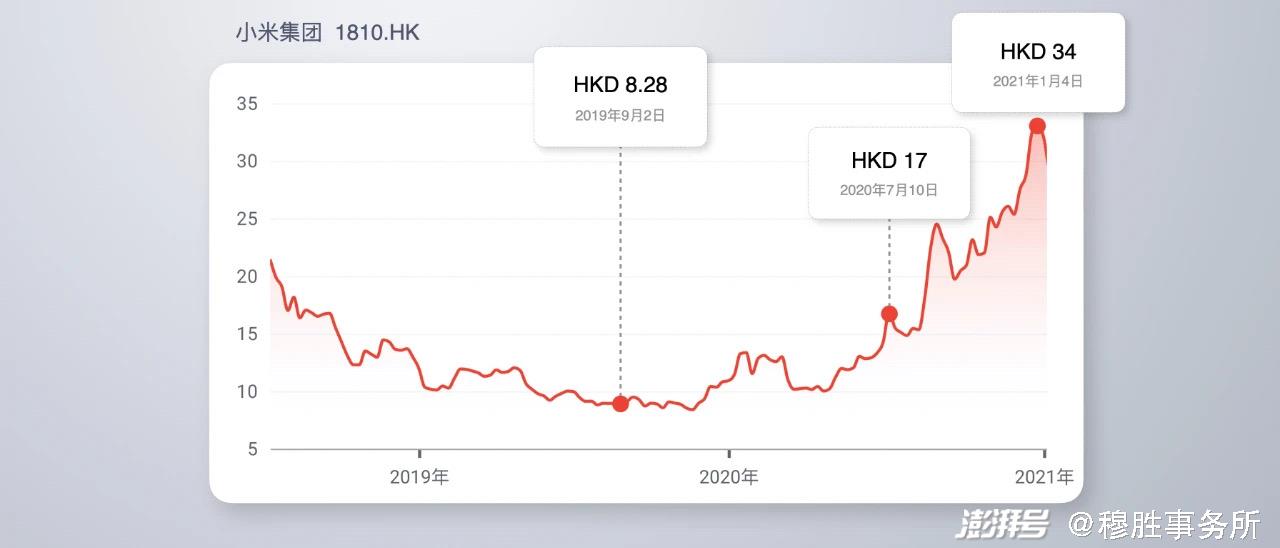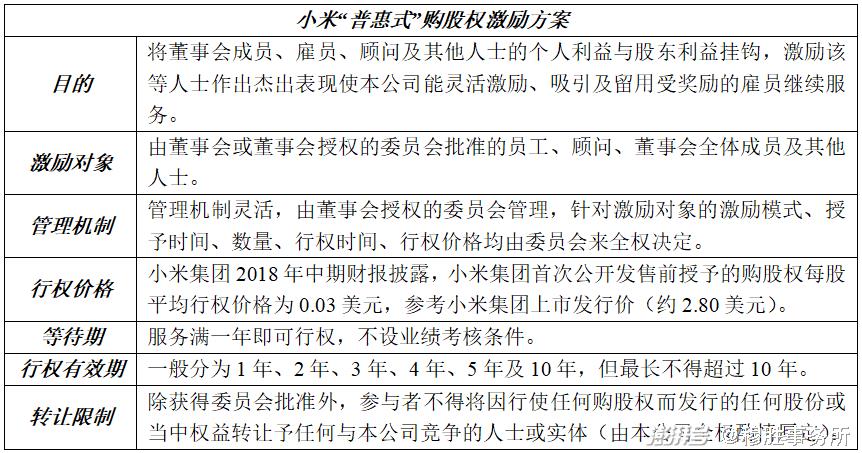Today, we talk about returning to the spotlight of millet. Behind good business performance, it must be the support of organizational ability; and the improvement of organizational ability is not a one-size-fits-all formula, it should be based on a firm human resources strategy choice.
Xiaomi and Lei Jun, in the human resources strategy, what did they do right?
01 Rebs returns with honor
On August 10, 2021, on the occasion of Xiaomi’s eleventh anniversary, Lei Jun released a speech entitled "My Dream, My Choice", sharing the hardships and ups of his entrepreneurial reliance in three hours, and also announced several impressive achievements.
First, Xiaomi made the Fortune Global 500 list for the third time a few days ago, ranking 338 in the world, an improvement of 84 places, which is the scale of "revenue" growth.
Second, according to the IDC report of the international research company, in the second quarter of 2021, Xiaomi’s mobile phone sales surpassed Apple and became the second largest in the world for the first time, with a global market share of 16.9%, which is the scale of "shipment" growth (sales increased by 86.6% year-on-year).
Third, after experiencing the dilemma of "talking big but listing broke", Xiaomi bought back a large number of shares at 3.60 billion Hong Kong dollars, with an average price of 9.35 Hong Kong dollars, and on January 4, 2021, the closing price has reached 34 Hong Kong dollars. Lei Jun’s "bragging cattle" at the beginning was finally realized, allowing IPO investors to double their profits. This is an increase in "market value" caliber.

02 human resources strategy selection
Lei Jun has a wealth of entrepreneurial experience, but he is not necessarily the best in terms of organizational maturity. Objectively speaking, Lei Jun should be a "market-oriented" or "product-oriented" entrepreneur. His many bold ideas, such as super flattening and no KPIs, have actually proved to be detours.
However, Lei Jun is also an extremely clear entrepreneur in organizational management. He threw out his own set of angular talent concepts, and in practice, he broke the old and established the new, while sticking to the end, which finally formed Xiaomi’s unique human resource strategy. This fully proves that entrepreneurs do not need 18 martial arts, it is enough to be the same; entrepreneurs’ clear choice in human resource strategy is better than "water".
The so-called human resource strategy is the strategic choice of the enterprise to improve the core staff efficiency (the most critical "narrow-caliber staff efficiency" of the enterprise) and promote the operation. Specifically, it includes how to build the "core talent warehouse", what kind of "North Star Metric" to promote, and a series of choices for matching human resource tools.
In my opinion, there are two main categories of human resource strategies:
The first type is the incentive human resource strategy. It focuses on improving the human resource capitalization rate (CRH) of the core talent warehouse. To put it bluntly, it is how to bind talents to the company. Either it attracts mature talents with equity payment leverage and preliminarily binds them, representing Internet companies such as Tencent and Ali; or after he enters the company, he sets up a team for it, allocates resources, sinks power, and then uses the incentive means of project and investment betting to firmly bind it to the project, representing the pioneers in traditional enterprises such as Haier, Vanke, and Country Garden.
The second type is the empower human resource strategy. It focuses on enhancing the talent density (DT) of the core talent warehouse. To put it bluntly, it is how to empower talents to grow. Resource empower mainly refers to promoting the connection of resources; the essence of methodology empower is talent training. If you don’t spend a lot of money on recruiting talents or release big incentives, enterprises must have enough confidence: first, their own resources are good, which can help ordinary talents succeed; second, their own methodology is good, which can make ordinary talents grow rapidly. In this regard, Haidilao, Zhonghai Real Estate and other enterprises are typical representatives.
Although Lei Jun may not have the above dichotomy of human resource strategy in his philosophy, he clearly chose the incentive human resource strategy. Lei Jun believes – "the most important thing is the team, followed by the product, only with a good team can we make a good product". He even believes that "to find the best people, a good engineer is not the top 10, but the top 100". It is very clear that this kind of core talent warehouse that supports Xiaomi’s rapid growth cannot come from internal cultivation, but must come from external excavation!
Because of this, in the first six months of the business, Lei Jun spent 80% of his time looking for people. In order to find a good hardware engineer, Lei Jun made more than 90 consecutive calls. To convince this person to join Xiaomi, several partners took turns communicating with him for a full 12 hours. This spirit has moved many excellent talents, and Xiaomi has been able to form a strong talent team at the beginning of the business, so that people with entrepreneurial spirit, the best people in professional fields, those with super learning ability and those who dare to challenge themselves have become the "base color" of the enterprise.
At this stage, Xiaomi’s team was shining brightly: Lin Bin was the former vice president of Google China Engineering Research Institute and had rich experience in software development. Zhou Guangping was a top talent in the field of mobile phone hardware, and Liu De was a top expert in the field of process design.

03 Equity Incentive Template for High Growth Enterprises
The ability to bring together so many outstanding talents is also due to Xiaomi’s incentive-based human resources strategy. This strategy advocates the use of equity incentive tools to bind the fate of core talents to the company in the first time. In this way, this group of most important people regard the achievement of Xiaomi as a common cause, and let them truly become the company’s "human capital".
In addition to allocating a certain amount of equity to the co-founders, Lei Jun has customized a "cash + equity" compensation model for other core employees. The pay mix when core employees join Xiaomi can be selected from the following plans:
Cash wages in normal market conditions.
2/3 of the salary in cash + a portion of the stock.
1/3 cash salary + more stock.
In fact, due to the optimism about Xiaomi’s development prospects, most core employees will choose the latter two compensation models. Xiaomi has introduced many top talents through equity incentives; on the other hand, it has also relieved the pressure on the capital flow of startups to a certain extent.
There are three types of equity incentive shares granted by Xiaomi to employees: one is share options (options); the other is restricted share awards (restricted shares); and the third is restricted share units (RSUs). According to its "Prospectus", as of March 31, 2018, the total number of class B shares involved in the share options and restricted share units that have been granted but not exercised is about 2.513 billion shares, accounting for 11% of the total share capital before listing. Xiaomi has a total of 14,513 full-time employees worldwide, and more than 5,500 (excluding executives) employees have received shares in Xiaomi, with a shareholding ratio of 38%. According to the market value of Xiaomi at the time of listing of 54.30 billion US dollars, the per capita shareholding value of employees is at least one million US dollars, which basically realizes financial freedom.
According to the content of Xiaomi’s public equity incentive plan, its equity incentive is very "affectionate and righteous" (as shown in the table):
Wide coverage: At the time of listing, more than one-third of employees owned shares in the company.
Incentive intensity is high: Take share options as an example, the call-over price is set at $0.03, which is almost equivalent to giving away for free;
Call-over conditions are loose: call-over does not set performance appraisal conditions and is only unlocked according to service period conditions.
Table: Xiaomi Share Option Incentive Scheme

Source: Xiaomi prospectus, annual financial report, Mu Sheng Enterprise Management Consulting Firm
These "affectionate and righteous" incentives fully demonstrate the sincerity of the company, and the employees also give back to the company with the same enthusiasm for work. There is a saying in the internal documentary of Xiaomi’s 8 years of entrepreneurship: Xiaomi employees "will have a fire in their hearts". It is because of this fire that Xiaomi staff worked 6 × 12 hours and persisted for nearly 7 years. At one point, they did not even require clock in and did not set KPIs (subsequent Xiaomi picked up the KPI assessment again, which was also considered by the outside world as a misunderstanding in management. But this kind of seemingly out-of-place management method can also be interpreted as Lei Jun’s confidence in Xiaomi’s motivational human resources strategy)…
On September 4, 2020, Xiaomi Group announced the latest Equity Incentive Plan on the Hong Kong Stock Exchange: a total of 218 million share options were granted to those who contributed to the group to subscribe for shares, and the share option holders could call-over at a price of HK $24.50 per share. The equity valid period is up to ten years. At the same time, former ZTE vice president, mobile phone business leader Zeng Xuezhong, former Lenovo vice president, mobile phone business leader Chang Cheng and other good players have also joined Xiaomi one after another.
Obviously, millet will motivate the human resources strategy to the end.

04 is written at the end
The human resource strategy of a large number of Chinese companies is the most taboo "caught in the middle", behind which is the boss’s "unclear". They are not determined to invest in the cost of introducing talents and carefully carve the incentive mechanism; nor are they determined to sort out resources, accumulate knowledge, and patiently polish the empowerment mechanism. In fact, there is a high possibility of a "mismatch" between talent and human resource strategy: mature talents cannot be patiently empowered by the enterprise, and potential talents are also difficult to have the courage to share with the enterprise before the resources and capabilities are lacking. Therefore, such enterprises are shallow in both aspects and full of loopholes.
Strictly speaking, the boss and HR are both responsible for thinking and following.
关于作者